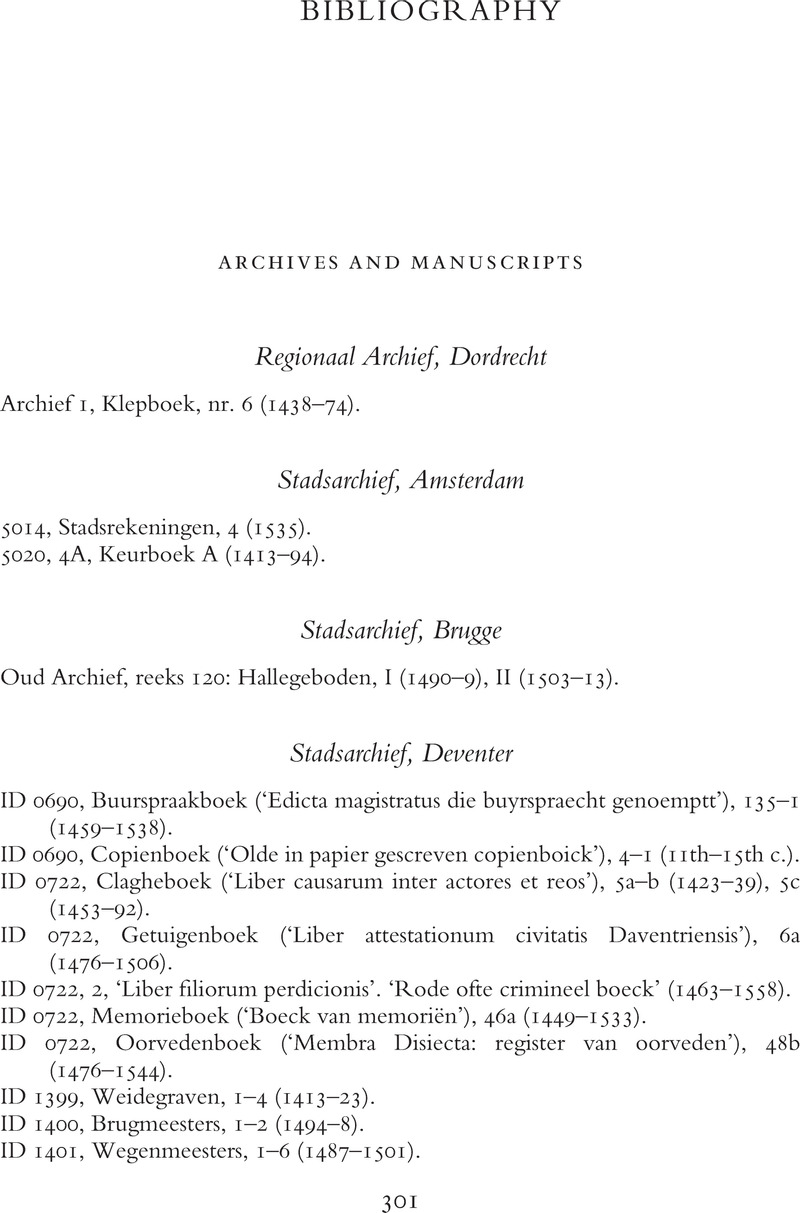Book contents
- Community, Urban Health and Environment in the Late Medieval Low Countries
- Cambridge Studies in Medieval Life and Thought Fourth Series
- Community, Urban Health and Environment in the Late Medieval Low Countries
- Copyright page
- Contents
- Figures
- Maps
- Tables
- Acknowledgements
- Note on Currency, Wages and Dates
- Abbreviations
- Introduction
- 1 Galenic Health and the Biopolitics of Flow
- 2 The Purged Urban Heart
- 3 Food, Health and the Marketplace
- 4 Good Neighbours
- 5 Plague in Urban Healthscapes
- 6 Building Community, Balancing Public Health and Order
- Conclusion Urban Health Expeditions
- Bibliography
- Index
- References
Bibliography
Published online by Cambridge University Press: 17 August 2021
- Community, Urban Health and Environment in the Late Medieval Low Countries
- Cambridge Studies in Medieval Life and Thought Fourth Series
- Community, Urban Health and Environment in the Late Medieval Low Countries
- Copyright page
- Contents
- Figures
- Maps
- Tables
- Acknowledgements
- Note on Currency, Wages and Dates
- Abbreviations
- Introduction
- 1 Galenic Health and the Biopolitics of Flow
- 2 The Purged Urban Heart
- 3 Food, Health and the Marketplace
- 4 Good Neighbours
- 5 Plague in Urban Healthscapes
- 6 Building Community, Balancing Public Health and Order
- Conclusion Urban Health Expeditions
- Bibliography
- Index
- References
Summary

- Type
- Chapter
- Information
- Publisher: Cambridge University PressPrint publication year: 2021

